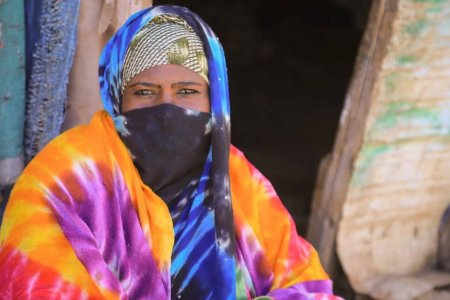
As the world’s worst humanitarian crisis rages on, women and children make up three-quarters of the four million people forced from their homes, putting them at greater risk.
By Jean-Nicolas Beuze in Hudaydah, Yemen | 31 March 2021
On a small patch of land on the outskirts of Hudaydah, Yemen’s main Red Sea port, 38-year-old Nabiha is attempting to rebuild her life brick by brick. Widowed in the early days of the country’s conflict and displaced multiple times by fighting, the mother-of-three is constructing a home she hopes will restore the stability her family has lost.
Originally from Al-Mokha, a city 185 kilometres down the coast famous for its historic coffee trade, Nabiha fled to Hudaydah with her mother, brother, daughter and two sons in 2015, after her husband was killed in an explosion while at work.
“He was rushed to the hospital, but after a week-long battle between life and death, he died,” Nabiha said. “It was a very bad and difficult time for us. I decided to leave. I was worried that my children would die too … if we stayed there.”
After spending most of her savings renting accommodation in Hudaydah, Nabiha again found herself caught up in intense fighting that erupted in the city at the end of 2017. The violence has killed more than 2,900 civilians and damaged more than 6,600 homes, 33 schools and 43 roads and bridges, making Hudaydah one of the worst affected cities in Yemen by six years of conflict.
“Families were killed and injured all around us.”
Without the means to leave and start over again elsewhere, Nabiha had no choice but to stay in the city, moving the family from place to place as the frontlines shifted.
“I was living very close to the fighting. I had to move to another area because families were killed and injured all around us. We moved three times from one neighborhood to another to avoid bullets and airstrikes.” Nabiha said.
As Yemen’s conflict enters its seventh year this month, Nabiha’s desperate struggles have become a familiar experience for millions caught up in the world’s worst humanitarian crisis.
Since 2015, more than 20,000 civilian deaths and injuries have been recorded and more than 4 million people have been forced to flee within the country’s borders. Three-quarters of internally displaced Yemenis are women and children, while one-in-four displaced families are headed by women like Nabiha.
In a patriarchal society like Yemen, where socio-cultural norms and practices shape the lives of women, the conflict has increased the risk of exploitation and abuse.
To try to support her family, Nabiha occasionally works as a housekeeper and uses the basic nursing skills she learned from her late husband – who was a nurse at a private hospital in Al-Mokha – working shifts at local private health clinics and giving patients injections, basic first aid and taking their blood pressure.
Source: UNHCR